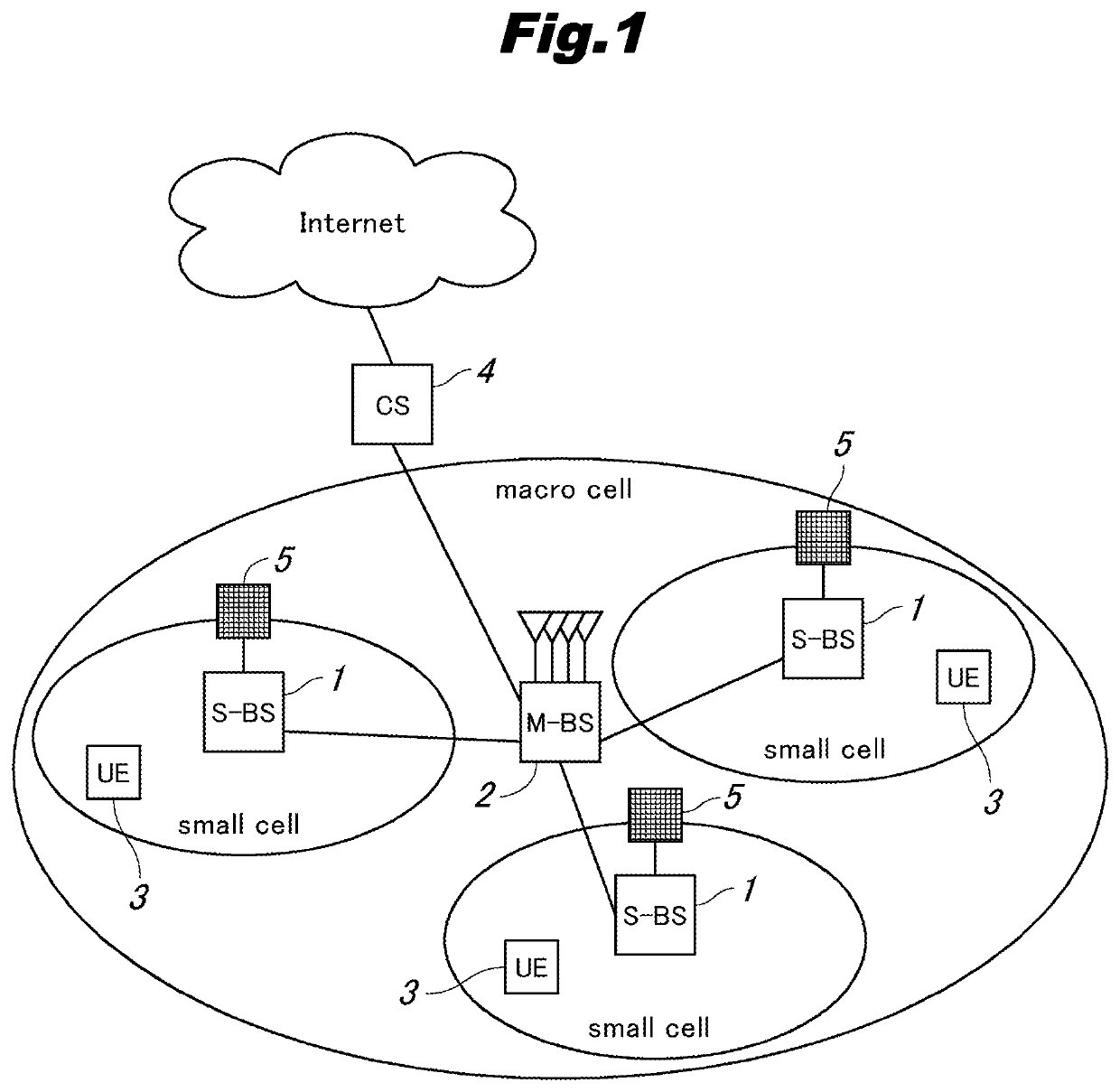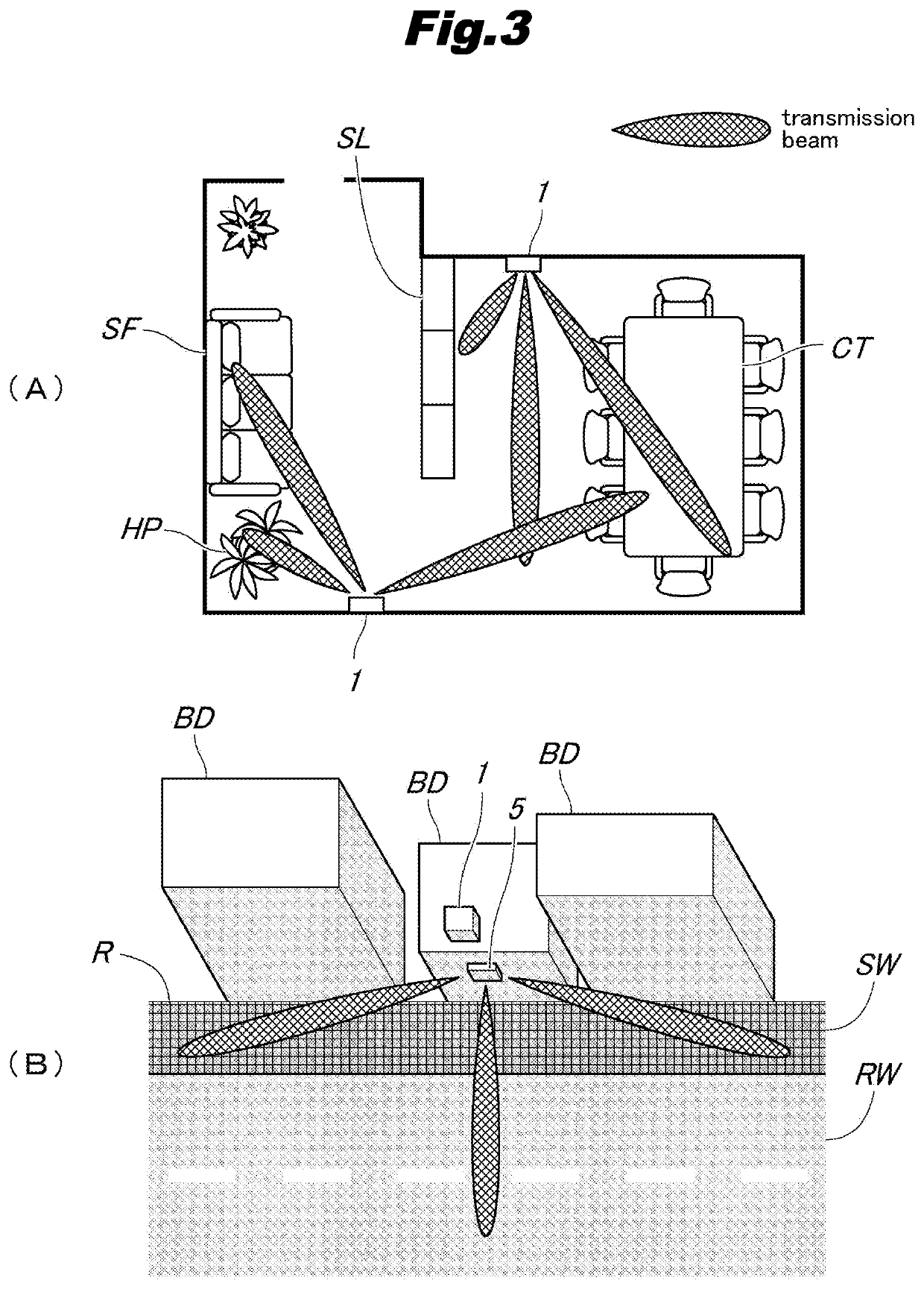Base station device, terminal device and transmission control method
a technology of transmission control and base station, which is applied in the direction of spatial transmit diversity, connection management, diversity/multi-antenna systems, etc., can solve the problems of reducing throughput, wasting time, and wasting resources, so as to shorten the waiting time
- Summary
- Abstract
- Description
- Claims
- Application Information
AI Technical Summary
Benefits of technology
Problems solved by technology
Method used
Image
Examples
first embodiment
Modification of First Embodiment
[0156]Next, a modification of the first embodiment of the present invention will be described. FIG. 12 is an explanatory view showing an example of historical information according to a modification of the first embodiment of the present invention. Except for what will be discussed here, the configuration of the present embodiment is the same as that of the first embodiment.
[0157]In cases where a moving obstacle exists, when the obstacle moves into a radio wave propagation path between a small cell base station 1 and a user terminal 3, communication is disconnected between the user terminal and the small cell station, and when the obstacle moves past the radio wave propagation path, the communication can be restored. When a person carrying a user terminal 3 moves so that the user terminal 3 moves into an area where radio wave paths are blocked by an obstacle, communication is disconnected between the user terminal and the small cell base station 1, an...
second embodiment
[0163]Next, a second embodiment of the present invention will be described. FIG. 13 is a diagram showing a general configuration of a communication system according to a second embodiment of the present invention. Except for what will be discussed here, the configuration of the present embodiment is the same as that of the first embodiment.
[0164]In the first embodiment of the present invention, beam control for controlling transmission beams formation based on transmission schedule information is applied to transmission in a cellular mobile communication system, in particular, applied to transmission of down control signals from a small cell base station 1 using wireless communication technology for 5G systems (fifth generation mobile communication systems), whereas, in the present embodiment, beam control for controlling transmission beams formation based on transmission schedule information is applied to transmission of down control signals from an access point 101 (base station a...
third embodiment
[0189]Next, a third embodiment of the present invention will be described. FIG. 15 is a diagram showing a general configuration of a communication system according to the third embodiment of the present invention. FIG. 16 is an explanatory view showing an example of installation of the first base stations 201 and the second base station 202. Except for what will be discussed here, the configuration of the present embodiment is the same as that of the first embodiment.
[0190]In the first embodiment, transmission schedule control is applied to transmission of control signals in access networks connecting the small cell base station 1 with the user terminals 3, whereas, in the present embodiment, transmission schedule control is applied to transmission of control signals in backhaul networks connecting the access networks with backbone networks.
[0191]As shown in FIG. 15, a communication system according to the present embodiment includes a first base station 201 (subordinate base statio...
PUM
 Login to View More
Login to View More Abstract
Description
Claims
Application Information
 Login to View More
Login to View More - R&D
- Intellectual Property
- Life Sciences
- Materials
- Tech Scout
- Unparalleled Data Quality
- Higher Quality Content
- 60% Fewer Hallucinations
Browse by: Latest US Patents, China's latest patents, Technical Efficacy Thesaurus, Application Domain, Technology Topic, Popular Technical Reports.
© 2025 PatSnap. All rights reserved.Legal|Privacy policy|Modern Slavery Act Transparency Statement|Sitemap|About US| Contact US: help@patsnap.com



